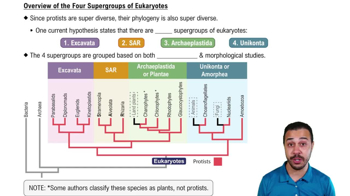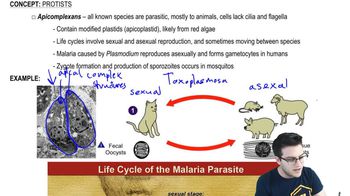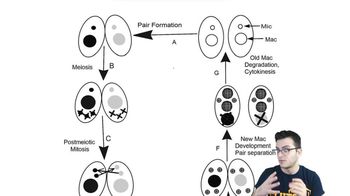27. Protists
Eukaryotic Supergroups: Exploring Protist Diversity
Learn with other creators
Practice this topic
- Multiple ChoiceWhich of the following is one of the main weaknesses of the proposed classification scheme in which all eukaryotes are divided into four supergroups?890views
- Multiple ChoiceWhich of the listed examples is a characteristic shared by diplomonads and parabasalids?1351views
- Multiple ChoiceApicomplexans are currently assigned to the SAR clade because __________.1191views
- Multiple ChoiceWhich of these groups includes photosynthetic unicellular organisms with flagella and contractile vacuoles?1284views
- Textbook Question
The most important primary producers in marine ecosystems are ___________.
1120views - Textbook Question
Which group is incorrectly paired with its description?
a. Diatoms—important producers in aquatic communities
b. Red algae—eukaryotes that acquired plastids by secondary endosymbiosis
c. Apicomplexans—unicellular parasites with intricate life cycles
d. Diplomonads—unicellular eukaryotes with modified mitochondria
1251views - Textbook Question
What is the role of PEP carboxylase in C4 and CAM plants?
a. It fixes CO2 into an organic acid.
b. It produces ATP for the Calvin cycle.
c. It replaces rubicso in the Calvin cycle.
d. It releases CO2 from organic acids.
1168views - Textbook Question
According to the phylogeny, which protists are in the same eukaryotic supergroup as plants?
a. Green algae
b. Dinoflagellates
c. Red algae
d. Both A and C
814views































